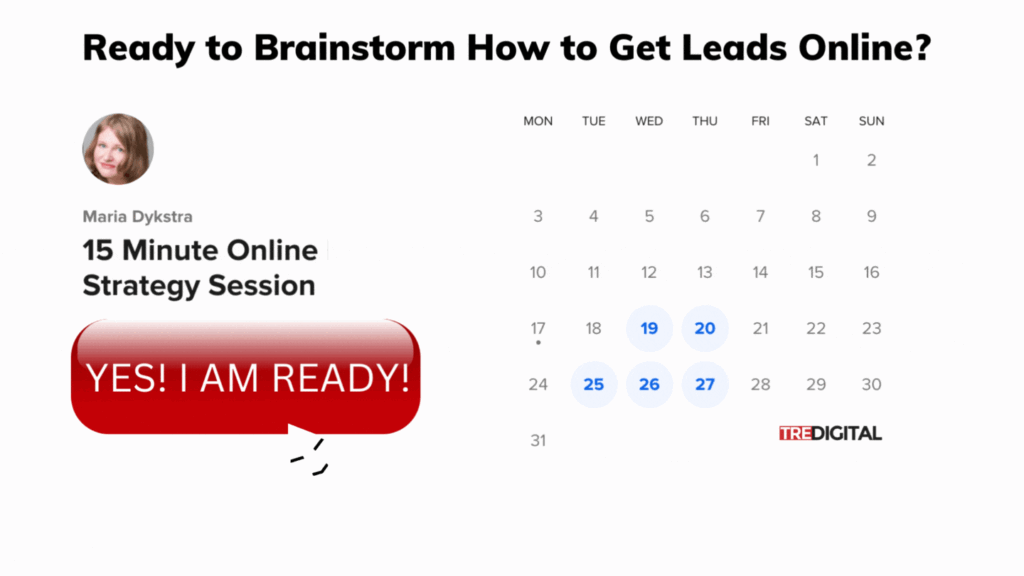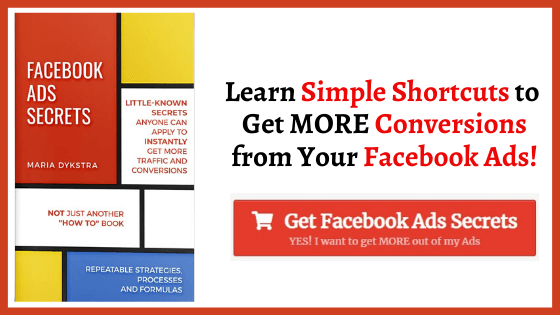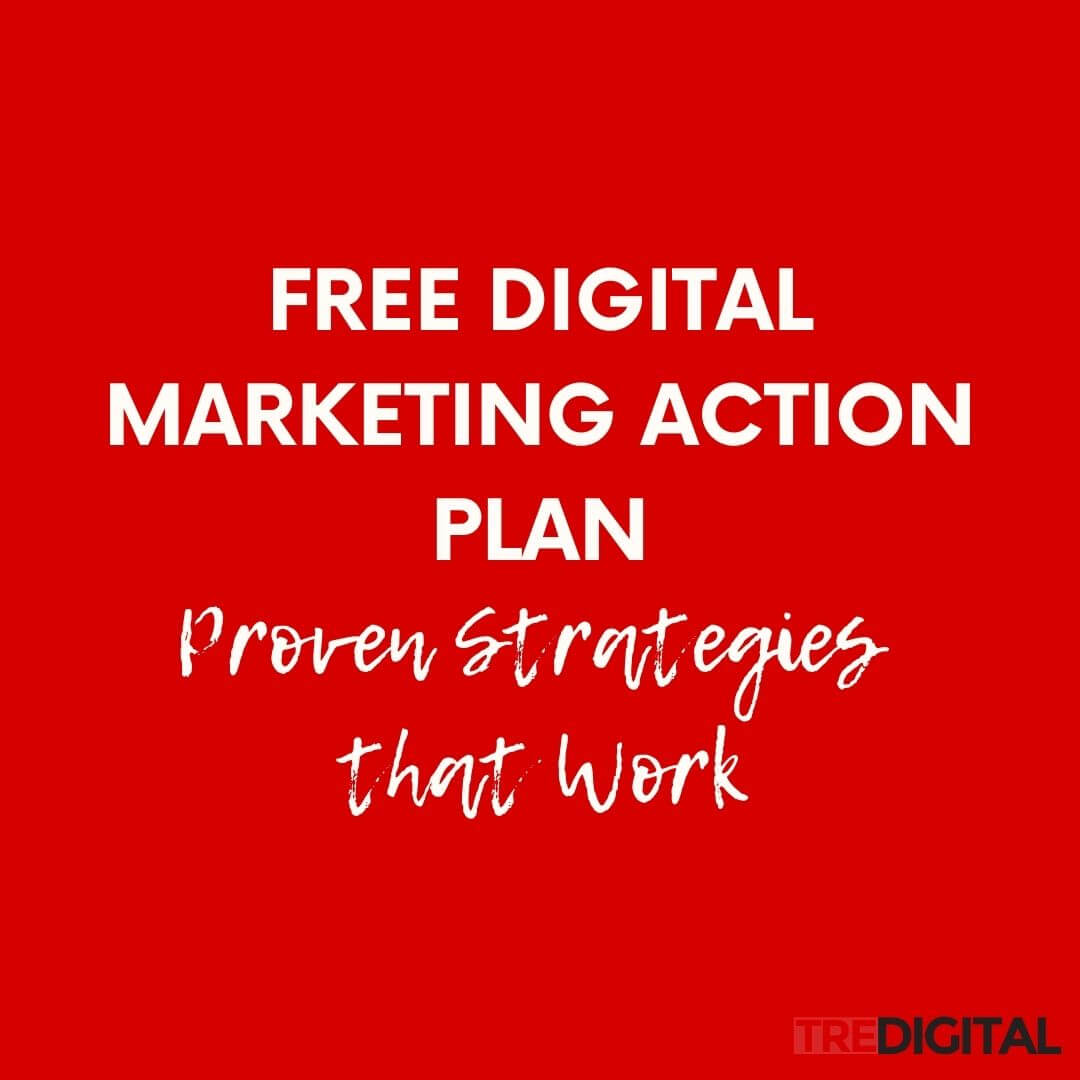Do you want to take your business to the next level? Are you looking for an effective way to reach out to potential customers? I
This post will help you master the art of effective cold outreach. It covers the most effective ways to reach out to potential customers via email, social media, and SMS.
Does cold outreach still work?
The short answer is:
It depends on the specific situation and goals of the outreach, but there is definitely a place for it in a comprehensive marketing strategy.
If you are ready to add cold outreach to your marketing strategy, we’ve put together a comprehensive guide on strategies for email, SMS and social media – our favorite platforms for cold outreach marketing.
Table of Contents
ToggleWhat are Key Differences Between Cold and Warm Outreach?
First, let’s define cold vs. warm outreach.
Cold outreach refers to reaching out to potential customers or clients without any prior interaction or relationship. It is effective in some cases, particularly for businesses with unique or highly sought-after products or services.
Cold outreach can be a quick way to generate leads, but it may not always be the fastest way to close them.
For example, if you are selling a highly-demanded product or service, cold outreach could result in quicker close rates because there is a higher likelihood that your target audience is interested in what you have to offer.
On the other hand, if you are selling a niche product or service, it may take longer to close leads because there is a smaller pool of potential customers who are interested.
Additionally, your approach can greatly impact the speed of closing leads.
If your approach is too aggressive or impersonal, you may turn off potential customers, resulting in slower close rates. On the other hand, if your approach is tailored to the specific needs and interests of your target audience, it can mean quicker close rates.
Warming up leads refers to establishing some level of relationship or connection with potential customers or clients before reaching out to them. It helps to build trust and increase the likelihood of a positive outcome from the outreach.
For example, following prospects on social media, engaging with their content, or connecting with them through a mutual acquaintance. But warming up leads is a time-consuming and fairly manual process.
In general, a combination of cold and warm outreach can be the most effective approach. For example, you can start by identifying potential leads through cold outreach, and then follow up with targeted, personalized messages to warm them up.
Top Tips for Effective Cold Outreach
Cold outreach can be an effective way to reach out to potential customers or clients, but approach it in the right way to maximize your chances of success.
Here are some of the top tips we use when creating an outreach strategy:
1 – Research your target audience
Before you start reaching out, make sure you have a clear understanding of your target audience and what they are looking for. This will help you tailor your messages to their specific needs and interests.
2 – Personalize your outreach
Cold outreach can often be perceived as impersonal, so it’s important to make your messages as personalized as possible. This could involve using the recipient’s name, referencing common interests, or mentioning specific details about their business or organization.
3 – Keep it short and to the point
When reaching out to someone for the first time, it’s important to be concise and to the point. Make your message brief and clear, and focus on the value that you can bring to the recipient.
4 – Offer something of value
Offer something of value to the recipient, such as a resource or tool that will help them solve a problem. This will help to establish your credibility and increase the likelihood that they will be interested in what you have to offer.
5 – Follow up
Don’t be afraid to follow up if you don’t receive a response to your initial outreach. However, make sure to respect the recipient’s time and space, and avoid becoming a nuisance.
6- Measure and adjust
Keep track of your results and adjust your approach as needed. Experiment with different messaging and tactics to see what works best for your specific situation.
Overall, the key to effective cold outreach is to be thoughtful, respectful, and to bring value to the recipient. If you approach cold outreach with the right attitude and approach, you can establish valuable relationships and grow your business.
What are the types of cold outreach
There are several different types of cold outreach that can be used to reach potential customers or clients. Some of the most common include:
1 – Email Outreach: This involves sending emails to potential customers or clients to introduce yourself, your product or service, and the value that you can bring to them.
2 – Direct Mail: Direct mail is a form of physical outreach that involves sending a physical letter or package to a potential customer or client.
3 – Social Media Outreach: This involves reaching out to potential customers or clients through social media channels, such as LinkedIn, Twitter, or Facebook.
4 – Cold Calling: Cold calling involves making phone calls to potential customers or clients to introduce yourself and your product or service.
5 – Networking: Networking involves reaching out to potential customers or clients through personal connections, such as friends, family members, or business associates.
6 – Event Outreach: Event outreach involves reaching out to potential customers or clients at trade shows, conferences, or other events.
Each type of cold outreach has its own pros and cons, and the best approach will depend on the specific situation, target audience, and goals of the outreach. It’s important to consider the type of industry, target audience, and the goals of the outreach when deciding on the best approach for your specific situation.
Best Social Media Platform Best For Your Cold Outreach
Not every platform is created equal. Choosing the best social media platform for cold outreach largely depends on your target audience and the type of industry you are in.
Here are a few options that you might consider:
1- LinkedIn: LinkedIn is a professional networking platform that is best suited for B2B businesses and industries such as finance, consulting, technology, and healthcare. It’s a great platform for reaching out to decision-makers and influencers in your target market.
2- Twitter: Twitter can be a powerful tool for reaching out to potential customers and building a network. It’s best suited for B2C businesses, particularly those in the tech, media, and entertainment industries. Twitter is a great platform for real-time engagement and creating a personal brand.
3- Facebook: Facebook is a large social network that can be used for cold outreach, particularly for B2C businesses. With over 2.7 billion monthly active users, Facebook is a great platform for reaching a wide audience, particularly in industries such as consumer goods, retail, and hospitality.
4- Instagram: Instagram is a visual platform that is best suited for B2C businesses in industries such as fashion, beauty, food, and travel. Instagram is a great platform for building a strong brand image and showcasing products and services to a visually-oriented audience.
Remember that cold outreach on social media platforms can be challenging. Be respectful of user privacy and not engage in spamming. Consider using personalized and relevant messaging to increase your chances of success.
What are the best tools for cold outreach on social media
Manual outreach is not scalable, therefore, consider automating the process.
There are several tools that can be used to help with cold outreach on social media. Some of our favorite ones include:
LinkedIn Sales Navigator: A tool specifically designed for B2B sales and marketing, LinkedIn Sales Navigator provides advanced search capabilities, lead recommendations, and analytics to help you reach your target audience on LinkedIn.
Hootsuite: A social media management tool that allows you to schedule, publish, and track your social media activity, as well as monitor conversations and engage with your target audience.
Dux-Soup: A LinkedIn automation tool that automates the process of visiting profiles, sending connection requests, and following up with leads.
Sprout Social: A comprehensive social media management platform that offers a variety of tools for managing your social media presence, including scheduling, monitoring, and analytics.
LeadFuze: A lead generation tool that uses artificial intelligence to help you identify and reach out to your target audience on social media, email, and other channels.
Hunter: A tool that helps you find email addresses for your target audience, allowing you to reach out to them directly with your outreach efforts.
The best tool for you will depend on your specific needs and goals, as well as the size of your business and your budget. Carefully evaluate your options and choose a tool that will meet your specific needs and help you achieve your goals.
Social media outreach templates
If you are struggling to come up with the emails for your cold outreach, we’ve compiled a few examples for you. Use them as a starting point, modify to fit your niche and your product. Measure success and optimize accordingly.
Introduction Template:
Subject: Introduction from [Your Name]
Hi [Recipient’s Name],
My name is [Your Name] and I came across your profile on [Social Media Platform]. I wanted to reach out and introduce myself as I believe we could potentially work together.
I would love to connect with you and learn more about your business [Company Name]. Could we schedule a quick call to discuss further?
Best regards,
[Your Name]
Problem-Solving Template:
Subject: Help with [Problem Your Service Solves]
Hi [Recipient’s Name],
I hope this message finds you well. I came across your profile on [Social Media Platform] and noticed that you might be facing a challenge with [Problem Your Service Solves].
I’d like to introduce you to [Your Service/Product], which has helped many businesses like yours to [Key Benefit Your Service Provides].
Would you be open to a quick call to discuss how we may be able to help you overcome this challenge?
Best regards,
[Your Name]
Collaboration Template:
Subject: Collaboration Opportunity
Hi [Recipient’s Name],
I came across your profile on [Social Media Platform] and was impressed by the work you’ve done in [Industry/Field]. I believe our skills and expertise could complement each other, and I’d love to explore the opportunity for collaboration.
Would you be open to a quick call to discuss further?
Best regards,
[Your Name]
Content Sharing Template:
Subject: [Article/Blog Post Title]
Hi [Recipient’s Name],
I came across your profile on [Social Media Platform] and noticed that you’re interested in [Topic]. I wanted to share with you an article I wrote that might be of interest: [Article/Blog Post Link].
Let me know what you think!
Best regards,
[Your Name]
Referral Template:
Subject: Referral from [Referrer’s Name]
Hi [Recipient’s Name],
I was referred to you by [Referrer’s Name], who spoke highly of your work in [Industry/Field]. I wanted to reach out and introduce myself as I believe we could potentially work together.
Would you be open to a quick call to discuss further?
Best regards,
[Your Name]
Event Invitation Template:
Subject: Invitation to [Event Name]
Hi [Recipient’s Name],
I came across your profile on [Social Media Platform] and noticed that you’re interested in [Topic]. I wanted to reach out and invite you to [Event Name], which will be taking place on [Date and Time].
The event will cover [Event Topic/Agenda] and will bring together [Event Attendee Demographic]. I believe you would find it valuable, and I would love for you to join us.
Please let me know if you’re interested, and I’ll send over the details.
Best regards,
[Your Name]
Should You Do Cold Outreach via SMS?
Many marketers swear by cold outreach via SMS.
Truth is: The effectiveness of cold outreach via SMS can vary, depending on several factors such as the target audience, the content of the message, and the timing of the outreach. We have seen successes with our SMS campaigns.
There are many advantages that make it a powerful tool for reaching potential customers. Some of these are:
1 – High open rates: SMS messages have a high open rate, with most people opening and reading SMS messages within a few minutes of receiving them.
2 – Immediate impact: SMS messages are delivered directly to the recipient’s phone and can have an immediate impact, making them a powerful tool for urgent or time-sensitive messages.
3 – Personalization: SMS messages can be personalized to the recipient, using their name and other specific details about their business or organization. This can help to establish a connection and build rapport with the recipient.
3- Cost-effective: Compared to other forms of marketing, SMS messaging is relatively low-cost, making it a cost-effective tool for reaching a large audience.
However, keep in mind that not all recipients will be receptive to cold outreach via SMS, and that some recipients may find it intrusive or annoying. Approach cold outreach via SMS with respect and professionalism, and only send messages to individuals who have given permission to receive them.
How to Get Started with Cold Outreach via SMS?
SMS campaign takes quite a bit of testing. Test different messaging and tactics to determine what works best for your specific situation.
Top 6 tips for getting started cold outreach via SMS:
1 – Get permission: Before sending SMS messages, make sure that you have the recipient’s permission to do so. This can be obtained through opt-ins or sign-ups on your website or at events.
2- Personalize your messages: Personalize your SMS messages to the recipient, using their name and referencing specific details about their business or organization.
3- Keep it brief and to the point: SMS messages have limited space, so it’s important to keep your messages brief and to the point. Focus on the value that you can bring to the recipient and keep the message focused on a single goal.
4- Offer something of value: Offer something of value to the recipient, such as a resource or tool that will help them solve a problem. This will help to establish your credibility and increase the likelihood that they will be interested in what you have to offer.
5 -Timing is key: Consider the timing of your SMS messages, and avoid sending them outside of normal business hours or on weekends.
6- Follow up: If you don’t receive a response to your initial outreach, follow up with another SMS message. However, make sure to respect the recipient’s time and space, and avoid becoming a nuisance.
7 – Measure and adjust: Keep track of your results and adjust your approach as needed. Experiment with different messaging and tactics to see what works best for your specific situation.
The key rules to effective cold outreach via SMS are be respectful, professional, and bring value to the recipient.
If you approach cold outreach through SMS with the right attitude and approach, you can establish valuable relationships and grow your business.
Templates for cold outreach via SMS
Here are a few templates for cold outreach via SMS that you can use as a starting point:
Introduction Template:
Subject: Introduction from [Your Name]
Hi [Recipient’s Name],
My name is [Your Name] and I came across your business [Company Name]. I wanted to reach out and introduce myself as I believe we could potentially work together.
Would you be open to a quick call to discuss how I may be able to assist you with [Your Service/Product]?
Best regards,
[Your Name]
Problem-Solving Template:
Subject: Help with [Problem Your Service Solves]
Hi [Recipient’s Name],
I hope this message finds you well. I came across your business [Company Name] and noticed that you might be facing a challenge with [Problem Your Service Solves].
I’d like to introduce you to [Your Service/Product], which has helped many businesses like yours to [Key Benefit Your Service Provides].
Would you be open to a quick call to discuss how we may be able to help you overcome this challenge?
Best regards,
[Your Name]
Follow-Up Template:
Subject: Follow-Up on Our Previous Discussion
Hi [Recipient’s Name],
I wanted to follow up on our previous discussion about [Your Service/Product]. I wanted to see if there’s been any progress on [Problem Your Service Solves] and if you would like to move forward with [Your Service/Product].
Please let me know if you would like to schedule a call to discuss further.
Best regards,
[Your Name]
It’s important to keep in mind that these templates are just a starting point, and that you should personalize your messages to the recipient, using their name and referencing specific details about their business or organization. You should also make sure that your messages are brief and to the point, and that you focus on the value that you can bring to the recipient.
Does Email Still Work?
Contrary to the popular belief, email outreach is not dead. There are two types of email campaigns that serve their purpose in your marketing strategy.
Cold outreach is useful for generating initial interest and quickly reaching a large number of potential customers, while lead nurturing is more effective for building long-term relationships and converting leads into customers over time.
Nurturing leads with email can be deemed more effective than cold email, as it allows you to build a relationship with potential customers over time. Lead nurturing involves regularly sending targeted, valuable content to a list of leads who have shown some level of interest in your product or service, but are not yet ready to make a purchase. The goal is to educate the lead, build trust, and position your brand as a thought leader in your industry. By nurturing the lead over time, you can keep your business top-of-mind and increase the likelihood of them becoming a customer when they are ready to make a purchase.
Cold email has a lower response rate as the recipient may not know your brand and is not expecting to receive an email from you. Cold email is viewed more of a “spray and pray” approach, where a large number of emails are sent to potential customers in the hopes of generating a small number of leads. But it brings in people who would not otherwise hear about your brand.
What Makes Cold Email Outreach Effective?
Targeted audience: With email outreach, you can directly target your desired audience, which increases the chances of your message being seen and acted upon.
Personalization: By personalizing each email, you can make the recipient feel valued and show that you have taken the time to research their specific needs and interests.
Cost-effective: Email outreach is a cost-effective way to reach a large number of people without the expenses associated with other marketing methods, such as direct mail or print advertising.
Measurable results: With email marketing software, it is possible to track the open rates, click-through rates, and conversion rates of your outreach campaigns, allowing you to make data-driven decisions on future outreach efforts.
Flexibility: Email outreach allows you to easily make changes to your messaging or targeting strategy in real-time, allowing you to quickly respond to changing market conditions or customer needs.
Scalability: Email outreach can be scaled up or down as needed, making it a highly flexible and adaptable tool for growing businesses.
But in order for the email outreach to be a highly effective it must be executed effectively and in a professional manner.
Cold Email Outreach Templates
Introduction email:
Subject: Introducing [Company Name] – Solving [Problem] for [Target Industry]
Dear [Name],
I hope this email finds you well. I wanted to take a moment to introduce you to [Company Name], a company dedicated to solving [Problem] for [Target Industry]. We believe that our [Product/Service] can greatly benefit your business and I would love to schedule a call with you to discuss it further.
Let me know if that would be possible and we can arrange a time that works best for you.
Best regards,
[Your Name]
Value proposition email:
Subject: [Company Name] – [Unique Benefit] for [Target Industry]
Hello [Name],
Are you tired of [Current Pain Point] in your [Target Industry]? We have the solution. [Company Name] offers [Unique Benefit] that will greatly improve your [Target Industry Process].
I would love to schedule a call with you to discuss how we can help and answer any questions you may have.
Please let me know if you are interested and we can arrange a time that works for you.
Best regards,
[Your Name]
Case study email:
Subject: [Success Story] – How [Company Name] helped [Client]
Hi [Name],
I came across your company and thought you might be interested in hearing about a recent success story of ours. [Company Name] recently helped [Client] solve [Problem] with our [Product/Service]. The results were outstanding and I think you’ll find it very informative.
Would you be open to hearing more about this case study and how we can help your business? I would be happy to schedule a call with you.
Best regards,
[Your Name]
Referral email:
Subject: Introduction from [Referral Name]
Hello [Name],
I hope this email finds you well. My name is [Your Name] and I’m reaching out to you on behalf of [Company Name]. [Referral Name] recommended that I reach out to you as they believe you would be a great fit for our [Product/Service].
Would you be open to a brief call to discuss how we can help your business? I would love to schedule a time that works for you.
Best regards,
[Your Name]
Industry trend email:
Subject: [Industry Trend] – How [Company Name] is leading the charge
Hello [Name],
I wanted to reach out and bring to your attention a recent trend in [Target Industry]: [Industry Trend]. [Company Name] is leading the charge in this area and I think you’ll find our [Product/Service] to be a valuable solution.
Would you be open to a call to discuss this trend and how we can help your business stay ahead of the curve?
Best regards,
[Your Name]
Pain point email:
Subject: Solving [Pain Point] for [Target Industry]
Hi [Name],
I hope this email finds you well. I wanted to reach out because I noticed that [Pain Point] is a common issue for [Target Industry]. At [Company Name], we have a solution that has proven to be highly effective in solving this problem.
Would you be open to a call to discuss this further and see how we can help your business?
Best regards,
[Your Name]
=====
Cold Email With Nurturing Sequence
Email 1: Introduction
Subject: Introduction to [Training Course Name]
Hi [Name],
I hope this email finds you well. My name is [Your Name] and I’m reaching out on behalf of [Company Name]. I came across your profile and thought you might be interested in [Training Course Name], our new training program designed to help [Target Audience] improve their [Skill or Knowledge].
I would be happy to schedule a call with you to discuss the program in more detail and answer any questions you may have.
Best regards,
[Your Name]
Email 2: Benefits of the course
Subject: [Training Course Name] – Unlocking Your [Skill or Knowledge] Potential
Hi [Name],
I wanted to follow up on my previous email and provide you with more information on [Training Course Name]. This program is designed to help [Target Audience] unlock their [Skill or Knowledge] potential, by providing them with [Key Benefit 1], [Key Benefit 2], and [Key Benefit 3].
I would love to schedule a call with you to discuss how [Training Course Name] can benefit you and your [Target Industry].
Best regards,
[Your Name]
Email 3: Testimonials
Subject: [Training Course Name] – What Our Participants Have to Say
Hi [Name],
I wanted to share some testimonials from participants who have recently taken [Training Course Name]. Here’s what they have to say:
“I have taken several training programs in the past, but [Training Course Name] stands out as the best. The instructor was knowledgeable and the program provided me with the skills I need to succeed in [Target Industry].”
“I was skeptical at first, but after taking [Training Course Name], I have seen a significant improvement in my [Skill or Knowledge]. I highly recommend this program to anyone looking to improve in this area.”
I think you’ll find these testimonials to be highly informative and I would be happy to schedule a call with you to discuss [Training Course Name] in more detail.
Best regards,
[Your Name]
Email 4: Special Offer
Subject: [Training Course Name] – Limited Time Offer
Hi [Name],
I wanted to reach out and let you know about a special offer we are currently running for [Training Course Name]. For a limited time, we are offering [Discount or Bonus] to participants who sign up for the program.
This is a great opportunity to improve your [Skill or Knowledge] and get ahead in [Target Industry]. I would love to schedule a call with you to discuss the program and this special offer in more detail.
Best regards,
[Your Name]
Email 5: Benefits of enrolling now
Subject: Don’t Miss Out on [Training Course Name]
Hi [Name],
I wanted to reach out and remind you of the benefits of enrolling in [Training Course Name]. This program is designed to help [Target Audience] improve their [Skill or Knowledge] and get ahead in [Target Industry].
By enrolling now, you will also receive [Discount or Bonus] as part of our limited time offer. I would be happy to schedule a call with you to discuss the program and answer any questions you may have.
Best regards,
[Your Name]
Keep in mind that these templates are just a starting point. Personalize your messages to the recipient, using their name and referencing specific details about their business or organization. Make sure that your messages are brief and to the point, and that you focus on the value that you can bring to the recipient.
CONCLUISON
Cold outreach can be an effective way to generate new leads and reach out to potential customers, but success rates can vary widely depending on a number of factors, such as your target audience, the industry, the message, and the overall strategy.
For cold outreach to be successful, start with a clear understanding of the target audience and what motivates them, create well-crafted and personalized message that speaks directly to their needs and interests.
Additionally, using the right channels to reach out (such as email, LinkedIn, or direct mail) and following best practices for outreach (such as using a catchy subject line, avoiding spammy language, and being respectful of the recipient’s time and attention) can all increase the chances of success.
Finally, have realistic expectations for the results of cold outreach. It’s rare for cold outreach efforts to immediately result in a high rate of conversions, and it may take multiple touches to convert a cold lead into a paying customer.
However, with persistence, creativity, and a willingness to learn and iterate based on results, cold outreach can be an effective way to grow a business.










